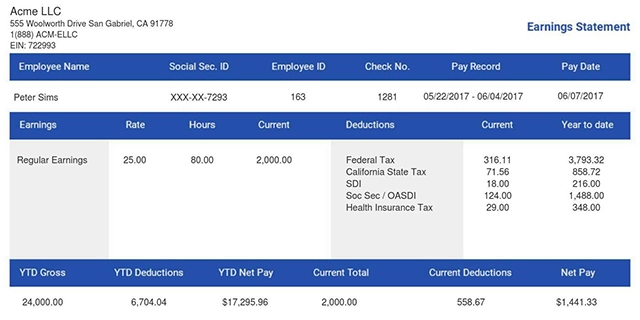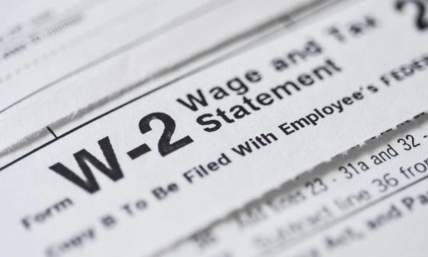What Does Paid in Arrears Mean for Employers?
It is important that any business owner or manager should be aware of how the payments and payroll should be handled. One more payment structure is rather frequent, and you are likely to come across rather often: payment in arrears. This term may seem rather complicated at first sight. It is not anything exceptional and may be helpful for many companies. Now, let’s get into “What does paid in arrears mean?” and how it can be useful for your organization.
- What Does Paid in Arrears Mean?
- What Does Paid in Arrears Mean in Payroll?
- The Mechanics of Processing Payroll in Arrears
- Paid in Arrears vs. Paid in Current
- Why Companies Choose To Pay in Arrears
- Different Types of Arrears Payments
- What Does Paid in Arrears Mean for Employers?
- To Sum It Up
- What Does Paid in Arrears Mean? FAQs
What Does Paid in Arrears Mean?
The term paid in arrears in its basic form means making a payment after some service has been delivered. You’re paid for work done after rather than before. This term is often used in the context of a business organization, especially in relation to employees’ wages, suppliers, and utilities. When you get the electricity bill at the start of each month, you pay for energy consumed the previous month. That is arrears.
Arrears mean two different things in the business context. The first and most general relates to the payment schedule, where payment is due after the completion of a service. The second meaning of the word relates to money that is delayed or late. In the case of standard business practices and payroll, it is generally understood as the first definition. It is a planned payment.
What Does Paid in Arrears Mean in Payroll?
Here, paying in arrears involves paying those employees who worked in the preceding payroll period. This system gives employers a basic way by which they can determine the exact amount. Then, they can pay for the number of hours or time periods worked.
For instance, consider an organization that operates payroll from the 1st to the 15th of the month. Under an arrears system, employees may get paid on the 20th of the month. Such a break of three to eight days enables the payroll department to go through all the necessary calculations. It lets them achieve the desired level of accuracy by the time payday comes.
The Mechanics of Processing Payroll in Arrears
The plan for processing payroll in arrears is as follows: Whenever a pay period is completed, the payroll department needs several days to do the computations and validations. This is the process of checking the time cards and calculating hours worked. They’ll also note paid and unpaid hours, as well as extra and bonus hours. Other forms of incentives, such as commissions and bonuses, have to be computed as well.
Let us introduce Sarah, a sales representative who earns money working for a commission. During the pay period, she gets her base pay and commission based on a given number of sales. Through processing the payroll on arrears, her employer can compute her total wages. They can identify all the sales during the pay period rather than adding to or subtracting from future checks.
Paid in Arrears vs. Paid in Current
To understand “What does paid in arrears mean?” it is helpful to compare it to paid in current. When employees are paid current, they are paid for the work during the pay period or at the end. This, of course, might sound good to employees, but it paints a different picture on the side of the employers.
Under the current pay system, employers have to predict or guess how many hours of work will be done. This situation can lead to complications for employees. One might go on leave for an unanticipated period or work extra hours that had not been foreseen. These variations further necessitate changes in future pay cheques. This, in turn, generates more paperwork and possibly even more mistakes.
Why Companies Choose To Pay in Arrears
Most organizations prefer arrears payment systems for the following reasons;
-
Accuracy in Calculations
The arrears method enables organizations to pay according to real work done, not forecasts. This is valuable for companies that employ workers whose pay is based on number of hours worked, sales, or tips. It allows for additional time to account for all factors that may affect the employees’ paycheck before finally giving it out.
-
Improved Cash Flow Control
Since employees get paid after they’ve rendered services, companies are in a better position to manage their cash flow. This is especially good news for small business service providers. They often have to wait 30 to 60 days to collect their fees before making the payments to the employees.
-
Simplified Overtime Calculations
The payment in arrears also enables accurate calculation of overtime. This is because actual working hours can be used instead of estimated ones. This minimizes any future changes that will be required and, hence, will increase adherence to labor laws.
Different Types of Arrears Payments
Payroll may be said to be the most common example of arrears payments within business entities. However, there are different types of arrears payments:
Annuity in Arrears
An arrears annuity pays regular installments at the end of the period as opposed to at the start. The most widely known example is a mortgage, where the homeowners pay for their homes at the end of the month. However, they use the property’s utility during the month.
Dividend in Arrears
Dividends in arrears refer to the situation where a firm delays paying the shareholders their dividend. These delayed payments must be made prior to the distribution of any dividends to common shareholders.
Vendor Payments in Arrears
Most business-to-business transactions occur on arrears payment agreements. Terms such as Net 30 or Net 60 are common. They mean that payment is made 30 or 60 days from the date of delivery of goods or services. This arrangement helps the buying business have time to assess the goods. They can check the physical quality and the quantity of the goods received before paying for them.
What Does Paid in Arrears Mean for Employers?
Employers need to consider some benefits of using an arrears payment system before implementing it. They must also look at the possible difficulties. Knowledge about these factors enables the organization to determine its payment systems. They can also implement good strategies that will lead to profit and minimize drawbacks.
The main benefit of paying in arrears is related to the issues of accuracy and control. By delaying payment until after work is done, the employer can be sure that all details are correct. This becomes particularly important, especially when it comes to the treatment of some variables. These are overtime, commissions, and shift differentials. For instance, a restaurant owner can give an accurate figure of tips received and the changes in working hours. And they’ll not have to make adjustments later.
Yet, it cannot be argued that certain difficulties are not present in the process. For one, new employees might struggle with the idea of receiving their first paycheck later than the expected time. This delay often puts a lot of pressure on the workers, especially those who survive paycheck to paycheck. Also, some employees may not fully grasp why there is a gap between doing a job and getting paid.
To Sum It Up
To sum up, “What does paid in arrears mean?”. It is a standard business practice. It has its perks for employers, especially in terms of payroll accuracy and control of cash flow. When used correctly, an arrears payment system has the potential to enhance payroll and compliance. It can also enhance operations by ensuring that payments are calculated accurately and fulfilled effectively.
Looking for tools to make your payroll management smoother? Our paystub generator offers user-friendly solutions for businesses of all sizes. Our tools help you create accurate, professional paystubs while saving valuable time. We understand the complexities of payment systems, like arrears. That’s why we're here to help streamline your payroll processes.















